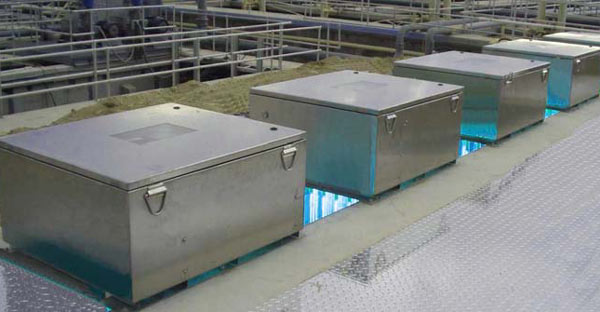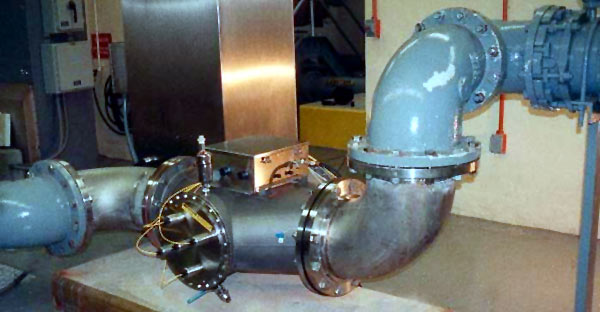 GLOW V
GLOW V
Vertical Open Channel UV Systems
- Recommended for municipal applications with medium to large flow rates
starting at .5MGD
- Proven chemical free UV disinfection
- Effective on a wide range of pathogens and parasites
- Economical to operate and maintain
Germicidal UV systems are rapidly becoming
standard for wastewater disinfection in large municipal and industrial
applications. After the water is treated initially and all particles are
filtered out, it goes through the UV system which inactivates all remaining
pathogens prior to releasing it back in the environment.
The main benefits of using germicidal ultraviolet
systems versus chemical disinfection is that UV cost-effectively provides
instantaneous disinfection, does not a create any harmful by-products,
eliminates dangerous and costly storage of chemical disinfectants and is overall
a much more environmentally friendly method.
Inactivation of pathogens in wastewater is
carried out by ultraviolet lamps that emit UV-C energy which targets the DNA or
RNA of microorganisms. Exposure to UV-C light breaks down the DNA/RNA which
prevents the microorganism from reproducing. Germs that cannot reproduce, cannot
infect and are therefore rendered harmless.
Specially designed UV lamps are housed in quartz
sleeves, which are in turn housed in a disinfection system (open channel or
closed chamber). The quartz sleeves not only help maintain the best operating
temperature, but also prevent lamps from coming in contact with the water. A
quartz sleeve looks like glass, but unlike glass, it is transparent to UVC rays.
While in the system, the wastewater is exposed to a high dose of UV energy. The
UV dose equals the UV lamps intensity multiplied by residence time. UV dose is
usually represented in microwatt-seconds per square centimeter (µWs/cm˛).
Time is the hydraulic residence time in the UV system.
The UV intensity is a function of the lamp type,
the arrangement of lamps and the energy absorbing elements in the water that
interfere with the UV light before it reaches the targeted microorganism. The
ability of the water to transmit germicidal UV energy is referred to as UV
transmittance (UVT). UVT is expressed as a percentage from 0 to 100. Clear
potable water has UVT of 90% or higher. Most wastewater plants average 65% UVT.
Once all relevant information has been
accumulated, a system will be designed based on mathematical and biological
data. This data will need to be reviewed by project engineering team to
determine the best orientation and the best UV lamp technology. The engineering
team will also analyze any issues that
would interfere with system performance.
Wastewater UV System
Design |





